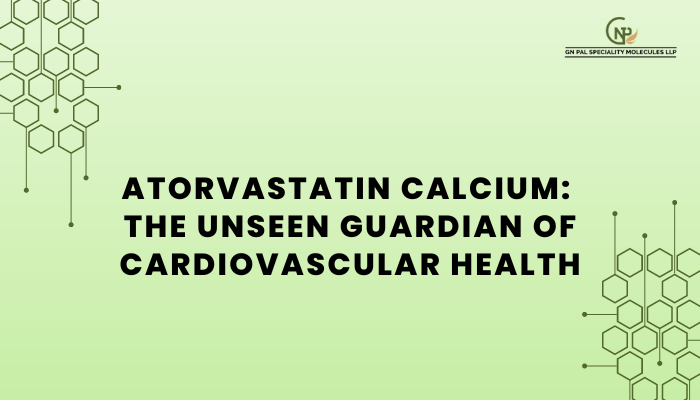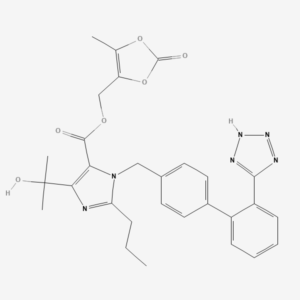Navigating the myriad of medications available in the market can often seem daunting, especially when dealing with chronic health conditions. One of the common medications encountered, particularly in cardiovascular health, is Atorvastatin Calcium. This blog post aims to provide an exhaustive understanding of this potent drug, outlining its mechanism of action, therapeutic applications, potential side effects, and necessary precautions to bear in mind.
UNRAVELING ATORVASTATIN CALCIUM
Atorvastatin Calcium belongs to the drug class known as statins, renowned for their primary role in lowering low-density lipoprotein (LDL) or the “bad cholesterol” levels in the blood. This reduction of LDL cholesterol helps mitigate the risk of cardiovascular diseases, like heart attacks and strokes, paving the way for a healthier heart and longer life.
HOW ATORVASTATIN CALCIUM WORKS
Atorvastatin Calcium and other statins work by blocking the function of an enzyme in the liver called HMG-CoA reductase. This enzyme plays a significant role in the production of cholesterol. By inhibiting this enzyme, Atorvastatin Calcium effectively lowers the amount of cholesterol that can accumulate in the bloodstream and attach to the arterial walls, reducing the chances of developing atherosclerosis – a condition characterized by the buildup of fatty, cholesterol-rich plaques in the arteries.
THERAPEUTIC BENEFITS: MUCH MORE THAN CHOLESTEROL CONTROL
1. MANAGEMENT OF HIGH CHOLESTEROL LEVELS
The primary role of Atorvastatin Calcium lies in helping individuals with high cholesterol levels that cannot be solely controlled through diet and exercise. The medication, in combination with a heart-healthy diet, can decrease LDL cholesterol and triglycerides in the blood while raising the levels of high-density lipoprotein (HDL) or “good cholesterol.”
2. AIDING IN CARDIOVASCULAR DISEASE PREVENTION
Beyond managing cholesterol levels, Atorvastatin Calcium also acts as a preventive measure against cardiovascular diseases. It’s especially beneficial for those who have risk factors such as diabetes, hypertension, a smoking habit, or a family history of heart disease. The medication’s ability to decrease cholesterol levels helps prevent the buildup of harmful plaques in the arteries, thereby reducing the likelihood of heart attacks and strokes.
3. POTENTIAL BENEFITS IN STROKE RECOVERY
Recent studies have also hinted at the benefits of Atorvastatin Calcium in enhancing stroke recovery. This is a testament to the medication’s vital role in improving cardiovascular health.
POTENTIAL SIDE EFFECTS: WHAT TO WATCH FOR?
Like all medications, Atorvastatin Calcium can have side effects, although these are generally rare. Common side effects can include gastrointestinal issues such as constipation, diarrhea, nausea, and gas. Other mild effects can include headache, joint pain, and insomnia.
In rare cases, Atorvastatin Calcium can lead to severe side effects, such as liver disease, myopathy, rhabdomyolysis, or increased blood sugar that could potentially lead to type 2 diabetes. If unexplained muscle pain, yellowing of the skin or eyes, excessive fatigue, or unusual changes in urine output are experienced, immediate medical attention should be sought.
PRECAUTIONS AND INTERACTIONS: BETTER SAFE THAN SORRY
Before starting treatment with Atorvastatin Calcium, it is vital to inform your healthcare provider about all other medications you are currently taking and any existing health conditions you may have, particularly liver disease and diabetes. If you are pregnant, planning to become pregnant, or are breastfeeding, this information should also be shared, as Atorvastatin Calcium can pose risks to the baby.
Regular blood tests might be required to monitor your cholesterol levels and liver function while on this medication. A balanced diet and regular exercise regimen should also be maintained alongside medication for optimal results.
Atorvastatin Calcium can interact with other drugs like certain antibiotics, antifungals, HIV medications, and other cholesterol-lowering medications. These interactions could increase the risk of serious muscle problems. Grapefruit and grapefruit juice can interfere with how Atorvastatin Calcium works and should be avoided.
UNSEEN GUARDIAN: ATORVASTATIN CALCIUM’S ROLE IN CARDIOVASCULAR HEALTH
Atorvastatin Calcium has undoubtedly emerged as a significant contributor to managing high cholesterol levels and averting cardiovascular diseases. However, its effective use requires understanding that this medication forms a part of an overall comprehensive treatment plan that includes diet, exercise, and weight control.
Regular medical consultations and health monitoring also form crucial components to ensure safe and effective use of this medication. By enhancing our understanding of medications like Atorvastatin Calcium, we can be better equipped to navigate the path towards optimal heart health.
Atorvastatin Calcium symbolizes the strides we have made in cardiovascular health management. Still, it also underscores the importance of ongoing medical research in uncovering even more effective therapeutic strategies to ensure that every heartbeat counts.




